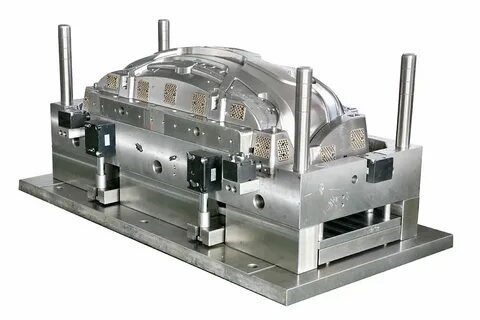Innovation, efficiency, and accuracy are critical success factors in the dynamic automobile sector. The integration of CNC machining services and injection molding has become a potent tactic to improve production capacity as manufacturers work to satisfy these demands.

The advantages these two technologies offer to the automobile industry as well as their mutual complementarity, are as follows:
CNC Machining: Precision and Versatility
The potential of Computer Numerical Control (CNC) machining to make intricate and extremely accurate components is well known. Material is removed from a solid block, known as a workpiece, using computer-controlled machinery to achieve the required form. The automobile sector frequently needs components with complex geometries and strict tolerances, and CNC machining is particularly beneficial for making these kinds of parts.
The following are some of the main advantages of CNC machining:
Injection Molding: Efficiency and Consistency
The melted material is injected into a mold during the injection molding process, which is a manufacturing technique used to create huge quantities of items. This method is widely used in the production of dashboards, bumpers, and interior panels for automobiles because it is very useful for producing parts with uniform sizes and forms.
The following are some of the main advantages of automotive injection mold services:
Integrating CNC Machining and Injection Molding
Although injection molding and CNC machining have their own advantages, combining these technologies can help automakers even more. The following is how:
Prototyping and Tooling:
Prototypes and injection molding tooling are frequently made by CNC machining. CNC machines enable manufacturers to swiftly build and test prototypes, facilitating speedy design iteration and refinement. After the final design is accepted, very accurate molds for injection molding may be made by CNC machining, guaranteeing the manufacture of reliable, premium products.
Complicated Components:
High-volume manufacture and complicated geometries are necessary for some automobile parts. Manufacturers may employ CNC machines to create complex components, and then use injection molding to recreate these components at scale by combining the two processes. This method makes use of both injection molding's efficiency and CNC machining's accuracy.
Material Optimization:
Several components within a single component may need to use different materials. While injection molding can make components from materials better suited for mass manufacturing, CNC machining may be utilized to build parts from high-performance materials that may be difficult to mold.
A strategy for enhancing production capabilities in the automotive industry involves integrating injection molding with CNC machining. This synergy fosters innovation and cost-effectiveness in addition to enhancing product quality and performance in the cutthroat automobile sector. The joint use of these production techniques will surely be crucial in determining how automobile manufacturing develops in the future as technology advances.